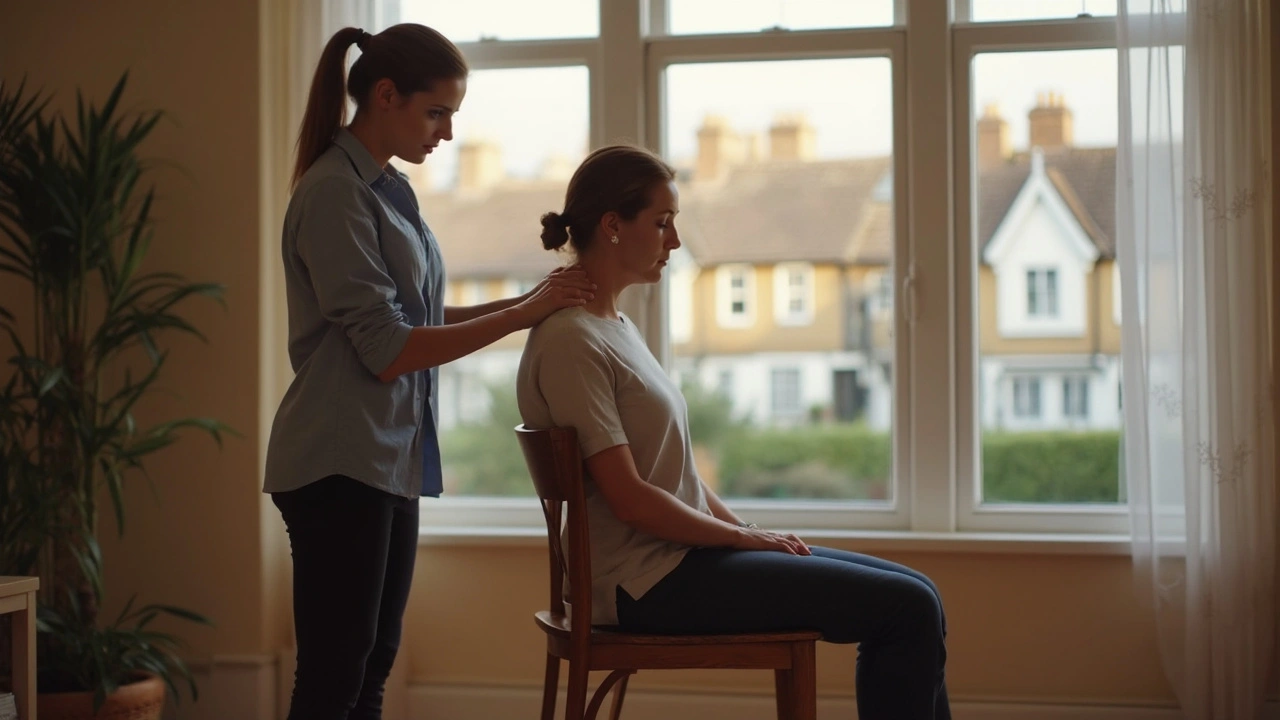Balinese Massage: Healing Benefits, Techniques, and Scientific Proof

Bali is famous for its stunning beaches, endless rice fields, and sunsets that make you question if Photoshop is even necessary. But there’s more to this hotspot than poolside cocktails. Balinese massage has become a global trend, with fans swearing it does everything from unclenching tight muscles to soothing a broken heart. The massage parlors here attract jetlagged tourists, stressed investors, athletes, and spiritual seekers. Is the so-called healing power of Balinese massage actually legit, or just a clever pitch invented on the Island of the Gods, sold on Instagram and in spa brochures? Maybe the Western world only heard about it in the last couple decades, but the Balinese have been practicing and passing these techniques down for centuries. If you’ve ever wondered why people walk out of a Balinese spa looking lighter on their feet (and sometimes in their wallets), you’re not alone. Let’s pull back the curtain on what makes this style so unique—and actually figure out if there’s science hiding in the incense.
Why Balinese Massage Feels So Different
Ask anyone who’s had a real Balinese massage what they noticed first, and you’ll hear the same two words: “It’s intense.” Unlike a gentle Swedish massage, Balinese practitioners are not shy. They mix deep-tissue work, gentle stretches, and dreamy acupressure in a way that hits your muscles and your mind. It’s like yoga, physio, and meditation got mashed into one experience. The magic comes from the way local culture, religion, and herbs get bundled into the treatment. Balinese Hindu beliefs about energy flow mean massage is more than rubbing sore muscles. Healers often start with a flower blessing or a prayer, setting the mood in a way you won’t get at your local chain spa.
A quick peek into the anatomy of a Balinese massage: it often involves skin-to-skin techniques with coconut oil, firm palm pressure, rhythmic rolling movements, and occasional pinches that might surprise you in a good way. Practitioners pay special attention to the body’s energy lines (nadis), believing blockages can mess with your physical health and your mood. Some spas even customize the pressure for you, asking about your week, your sleep, and your injuries. A session can last anywhere from 60 minutes to two hours (or more, if you’re feeling decadent). Afterwards, expect a ginger tea ritual, which locals say “locks in” the healing.
Here’s a slice of trivia you might not hear from your average travel guide. Traditional Balinese massage uses a blend of aromatherapy oils, often scented with sandalwood, frangipani, or ginger. These aren’t just for the Instagrammable vibes—research from the University of North Sumatra (2022) found that essential oils actually lower the heart rate and trigger ‘happy hormones’ like dopamine in just 30 minutes. Curious about how popular this style is? According to a 2023 survey by Asian Spa Industry Monitor, over 60% of wellness tourists visiting Bali book at least one Balinese massage during their stay.
There’s also some real skill involved. Therapists train for years and often pick up secret techniques from their mothers or grandmothers. It’s one of the few health traditions where the apprentice still learns at the knee of a family elder, rather than just out of a textbook. So the next time someone says their massage therapist “just knows” where it hurts, you’ll know why.
| Technique | How It Feels | Purpose |
|---|---|---|
| Deep palm pressure | Firm and grounding | Targets muscle tension |
| Thumb rolling | Sharp, localized | Relieves trigger points |
| Stretching | Gentle pull | Improves flexibility |
| Acupressure | Steady pressure | Energy balancing |
| Aromatherapy oils | Soothing | Calms nerves |
For anyone trying Balinese massage for the first time, a few tips go a long way. Don’t walk in stuffed from a heavy lunch—digestion plus deep-tissue work is a recipe for regret. Communicate clearly about injuries or tender spots. If you’re sensitive to smell, ask about the oils in advance; you can always request unscented coconut oil if you’re allergic. And hydration after the massage isn’t a myth—drinking water does help flush out toxins the massage releases.

Does Balinese Massage Really Heal? Facts and Science vs. Hype
Now, onto the big question: does the famed Balinese massage really heal, or is it just a feel-good marketing story? Start with what actual science says. Massage, in general, has proven medical benefits: it decreases cortisol (the stress hormone), raises oxytocin (the cuddle hormone), and boosts circulation. But where does Balinese massage fit in this evidence?
A Japanese-Balinese collaborative study in 2022, published in the Journal of Bodywork and Movement Therapies, found specific improvements in people with long-term neck and back pain after weekly Balinese massage, compared to standard physiotherapy. Subjects reported a 38% greater reduction in discomfort and far better sleep over the course of six weeks. Not mind-blowing, but definitely more than placebo. Even doctors have started recommending it for those recovering from muscle injuries or chronic migraines—all without medication side effects.
But what about its deeper, more mystical claims? Practitioners often talk about unblocking stuck energy or resetting your spiritual balance. Western medical journals don’t usually track “blocked energy” or offer blood tests for your inner chi. Yet, a Georgetown University pilot study (2023) measured heart rate, blood pressure, and levels of anxiety before and after Balinese massage. Nearly all volunteers saw their numbers shift in the right direction—slower heartbeat, lower blood pressure, less anxiety—even after a single session. Maybe we can’t screenshot an energy blockage, but anyone who’s felt their head clear after an hour on the table knows something is happening nonetheless.
Let’s talk about mental health for a minute. The 2024 Bali Wellness Report showed that regular Balinese massage sessions reduced the symptoms of burnout in expats by nearly 60% over three months. Clients talked about sleeping deeper and finding patience where there once was only stress. One Australian school principal reported she skipped her usual anti-anxiety meds after just three weekly massages. Is that fact or fiction? Hard to say for sure, but the numbers certainly hint at real benefits.
There are, of course, some doubters. Placebo effects are powerful, and anything involving soft lighting, nice scents, and human touch is bound to make us feel good, right? Fair point. But then why do so many long-term chronic pain patients, who roll their eyes at most “alternative” options, still walk out grinning?
Also, Balinese massage boasts higher compliance rates—meaning people stick with it longer—than other spa-based or alternative treatments. The reason might be the multisensory experience: it’s not just hands on skin, but sounds, smells, and gentle rituals all combining to make people feel supported. It’s this mind-body blending that modern researchers think could be behind the so-called healing.
| Benefit | Percentage Reporting Improvement |
|---|---|
| Reduced stress | 82% |
| Better sleep | 76% |
| Lowered pain | 68% |
| Improved mood | 55% |
What about risks? Compared to deep-tissue or shiatsu, Balinese massage is gentler on the bones but not always on sore muscles. Communicate with the therapist if the pressure is too much—you won’t offend them. No therapy is a silver bullet; people with serious health conditions, open wounds, or recent surgeries need to check in with their doctor before booking a session. Pregnant women should ask for someone trained in prenatal techniques.
One cool trend: more wellness clinics are working hand in hand with Balinese spa therapists to build integrative care. Patients recovering from sports injuries, cancer, or even childbirth partner their medical protocols with regular massage sessions. According to the 2025 International Wellness Institute report, clinics that blended Balinese massage into post-op care saw 27% faster patient mobility and lower reliance on painkillers. Sure, it’ll never take the place of antibiotics or surgery, but there’s a reason top athletes squeeze in sessions before big matches or recovery.

How to Get the Most Out of Your Balinese Massage
So, you’re ready to try it—or you want to maximize all those supposed benefits. First thing: set the right expectations. Don’t expect instant miracles. Healing takes time, and while one session may leave you feeling floaty and refreshed, building a routine works best for longer lasting changes. Consistency trumps intensity every time.
It helps to know what you’re looking for—pain relief, deep relaxation, or just to experience traditional Balinese culture. Share your needs and any health issues clearly with your therapist. The best practitioners love getting this feedback, and they’ll match their touch to your goals that day. Some spas offer personalized add-ons, like volcanic stone compresses or herbal scrubs. These have genuine muscle-soothing properties, especially when paired with the core massage. Don’t be shy—ask about the menu and go for what feels right, but stay within your comfort zone if you’re new.
A few practical dos and don’ts can multiply your benefits:
- Take a warm shower before your appointment. Clean skin helps absorb nourishing oils, and warm muscles are easier to treat.
- Arrive early and spend a few minutes sipping herbal tea to settle into the environment.
- Put your phone on silent and let your therapist know if you’d rather not chat during the session.
- If you’re dehydrated, sip water for an hour after. It combats grogginess and aids toxin flush-out.
- Wear loose clothes post-session; compressive jeans undo some of the muscle work.
After the massage, notice how your body feels—not just muscles, but focus, mood, and sleep. Keep a simple log in your notes app. If you’re seeing real results, build the sessions into your self-care routine. Some people go weekly; others do monthly check-ins, lining up a session with stressful events, travel, or athletic competitions.
Traveling to Bali isn’t the only way to experience the real thing. More certified Balinese therapists are opening spas in major cities worldwide. Look for accreditation from Balinese Healing Associations or referrals from wellness travelers. If possible, check out reviews online or ask for therapist bios before you book. Don’t settle for watered-down versions offered as hotel “add-ons”—the benefits come from skill, not just brand name.
When done right, Balinese massage does more than untangle your muscles. It can be a full-body reset, a cultural immersion, and, yes, maybe even a bit of real healing tucked inside the magic. Whether the results are ancient wisdom or modern placebo, there’s no denying the good it brings. The only way to know which side you’ll land on? Try it yourself. You just might walk out lighter than you walked in.





